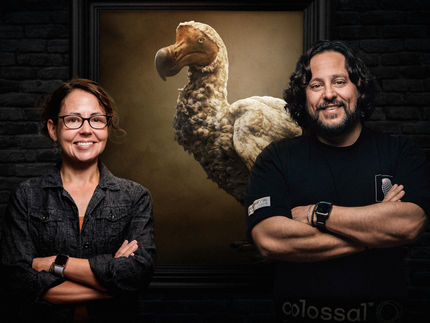Reading history through genetics
New method analyzes recent history of Ashkenazi and Masai populations, paving the way to personalized medicine
Computer scientists at Columbia's School of Engineering and Applied Science have published a study in The American Journal of Human genetics (AJHG) that demonstrates a new approach used to analyze genetic data to learn more about the history of populations. The authors are the first to develop a method that can describe in detail events in recent history, over the past 2,000 years. They demonstrate this method in two populations, the Ashkenazi Jews and the Masai people of Kenya, who represent two kinds of histories and relationships with neighboring populations: one that remained isolated from surrounding groups, and one that grew from frequent cross-migration across nearby villages.
"Through this work, we've been able to recover very recent and refined demographic history, within the last few centuries, in contrast to previous methods that could only paint broad brushstrokes of the much deeper past, many thousands of years ago," says Computer Science Associate Professor Itsik Pe'er, who led the research. "This means that we can now use genetics as an objective source of information regarding history, as opposed to subjective written texts."
Pe'er's group uses computational genetics to develop methods to analyze DNA sequence variants. Understanding the history of a population, knowing which populations had a shared origin and when, which groups have been isolated for a long time, or resulted from admixture of multiple original groups, and being able to fully characterize their genetics is, he explains, "essential in paving the way for personalized medicine."
For this study, the team developed the mathematical framework and software tools to describe and analyze the histories of the two populations and discovered that, for instance, Ashkenazi Jews are descendants of a small number — in the hundreds — of individuals from the late medieval times, and since then have remained genetically isolated while their population has expanded rapidly to several millions today.
"Knowing that the Ashkenazi population has expanded so recently from a very small number has practical implications," notes Pe'er. "If we can obtain data on only a few hundreds of individuals from this population, a perfectly feasible task in today's technology, we will have effectively collected the genomes of millions of current Ashkenazim." He and his team are now doing just that, and have already begun to analyze a first group of about 150 Ashkenazi genomes.
The genetic data of the Masai, a semi-nomadic people, indicates the village-by-village structure of their population. Unlike the isolated Ashkenazi group, the Masai live in small villages but regularly interact and intermarry across village boundaries. The ancestors of each village therefore typically come from many different places, and a single village hosts an effective gene pool that is much larger than the village itself.
Previous work in population genetics was focused on mutations that occurred very long ago, say the researchers, and therefore able to only describe population changes that occurred at that timescale, typically before the agricultural revolution. Pe'er's research has changed that, enabling scientists to learn more about recent changes in populations and start to figure out, for instance, how to pinpoint severe mutations in personal genomes of specific individuals—mutations that are more likely to be associated with disease.
"This is a thrilling time to be working in computational genetics," adds Pe'er, citing the speed in which data acquisition has been accelerating; much faster than the ability of computing hardware to process such data. "While the deluge of big data has forced us to develop better algorithms to analyze them, it has also rewarded us with unprecedented levels of understanding."
Other news from the department science
These products might interest you

Limsophy by AAC Infotray
Optimise your laboratory processes with Limsophy LIMS
Seamless integration and process optimisation in laboratory data management

ERP-Software GUS-OS Suite by GUS
Holistic ERP solution for companies in the process industry
Integrate all departments for seamless collaboration

Get the life science industry in your inbox
By submitting this form you agree that LUMITOS AG will send you the newsletter(s) selected above by email. Your data will not be passed on to third parties. Your data will be stored and processed in accordance with our data protection regulations. LUMITOS may contact you by email for the purpose of advertising or market and opinion surveys. You can revoke your consent at any time without giving reasons to LUMITOS AG, Ernst-Augustin-Str. 2, 12489 Berlin, Germany or by e-mail at revoke@lumitos.com with effect for the future. In addition, each email contains a link to unsubscribe from the corresponding newsletter.


















































